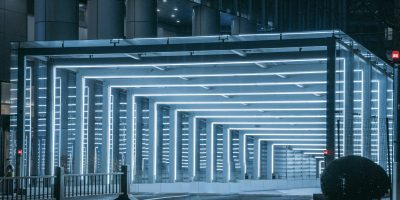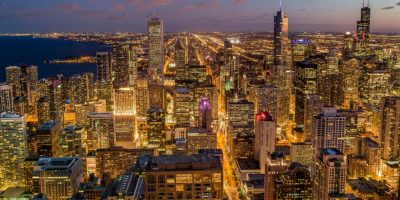One might not immediately notice the quiet revolution above in the hustle and bustle of urban life amidst towering skyscrapers and bustling streets. Yet, in recent years, a subtle but significant transformation has been underway in street lighting, driven by the widespread adoption of Light Emitting Diode (LED) technology. In this article, we’ll explore how LED streetlights are reshaping the nocturnal landscape of our cities, ushering in a new era of efficiency, safety, and sustainability.
Traditionally, cities relied on high-pressure sodium (HPS) and metal halide streetlights to illuminate their streets and public spaces. While these technologies provided adequate illumination, they were also associated with several drawbacks, including high energy consumption, short lifespans, and poor color rendering. Enter LED streetlights. With their small size, energy efficiency, and long lifespan, LEDs have revolutionized how cities approach outdoor lighting.
LEDs are directional, allowing for more precise and efficient illumination. This directional light output reduces light pollution and ensures that more generated light is directed where needed most—the streets below. So, here are the top three reasons why LED streetlights are transforming urban areas.
Customization and Control
LED street lighting offers unparalleled customization and control, empowering cities to tailor their lighting systems to meet specific needs and conditions. For instance, cities can dim streetlights during periods of low traffic or late at night when pedestrian activity is minimal, conserving energy without compromising safety. Conversely, lights can be brightened in high-traffic areas or during inclement weather.
In addition to dynamic control capabilities, LED street lighting systems often incorporate advanced technologies such as smart sensors and networked lighting controls. These features enable remote monitoring and management of individual fixtures or entire lighting networks, facilitating centralized control and optimization of lighting operations.
Furthermore, LED street lighting provides extensive customization options for color temperature and light distribution. Cities can select from various color temperatures, from warm white to cool white, to achieve their desired ambiance. Adjustable optics and lenses ensure precise light distribution, directing illumination where needed while minimizing glare and light spillage.
LED Starter Guide for Multifamily and Commercial Properties
Enhanced Visibility and Safety
LED streetlights significantly improve visibility and safety on city streets, especially during nighttime hours. Traditional lighting sources that may produce a warm, dim glow, LED fixtures emit a crisp, white light that enhances contrast and color rendition. This heightened visibility makes objects and obstacles more discernible, reducing the likelihood of accidents and enhancing overall safety for motorists, cyclists, and pedestrians alike.
Also, LED streetlights’ bright and uniform illumination creates a more inviting and secure urban environment, instilling confidence and reassurance among residents and visitors. This increased perception of safety encourages more people to venture out after dark, fostering vibrant and active communities.
Additionally, LED streetlights create pedestrian-friendly cities by illuminating streets and sidewalks with consistent, glare-free light. This enhances pedestrian visibility and improves the overall aesthetic appeal of urban spaces, promoting a sense of well-being and connectivity.
Environmental Impact
LED technology boasts remarkable energy efficiency. It consumes significantly less electricity than traditional lighting sources like high-pressure sodium (HPS) and metal halide fixtures while producing the same illumination level. This reduced energy consumption not only cuts down carbon emissions and energy costs for municipalities but also aligns well with renewable energy sources, often intermittent.
Browse Commercial Lighting Products
Furthermore, LED streetlights have considerably longer lifespans than traditional lighting technologies, lasting up to 100,000 hours under normal operating conditions. This extended lifespan reduces the frequency of bulb replacements, resulting in less waste and lower maintenance costs over time. Additionally, LED fixtures are highly durable and resistant to shock, vibration, and temperature fluctuations, enhancing their longevity and reliability in outdoor environments.
LED streetlights are also environmentally friendly in terms of their manufacturing and disposal. Many conventional lighting sources contain hazardous materials like mercury; LEDs are free from toxic substances, making them safer for human health and the environment. Moreover, the manufacturing process for LED fixtures produces fewer greenhouse gas emissions and pollutants than traditional lighting technologies, reducing their overall environmental impact.
The Dawn of LED Streetlights
Gone are the days of traditional high-pressure sodium (HPS) and metal halide streetlights, with their warm, flickering glow. In their place, LED streetlights have emerged as the lighting solution for cities worldwide. Offering a crisp, white light and superior energy efficiency.





